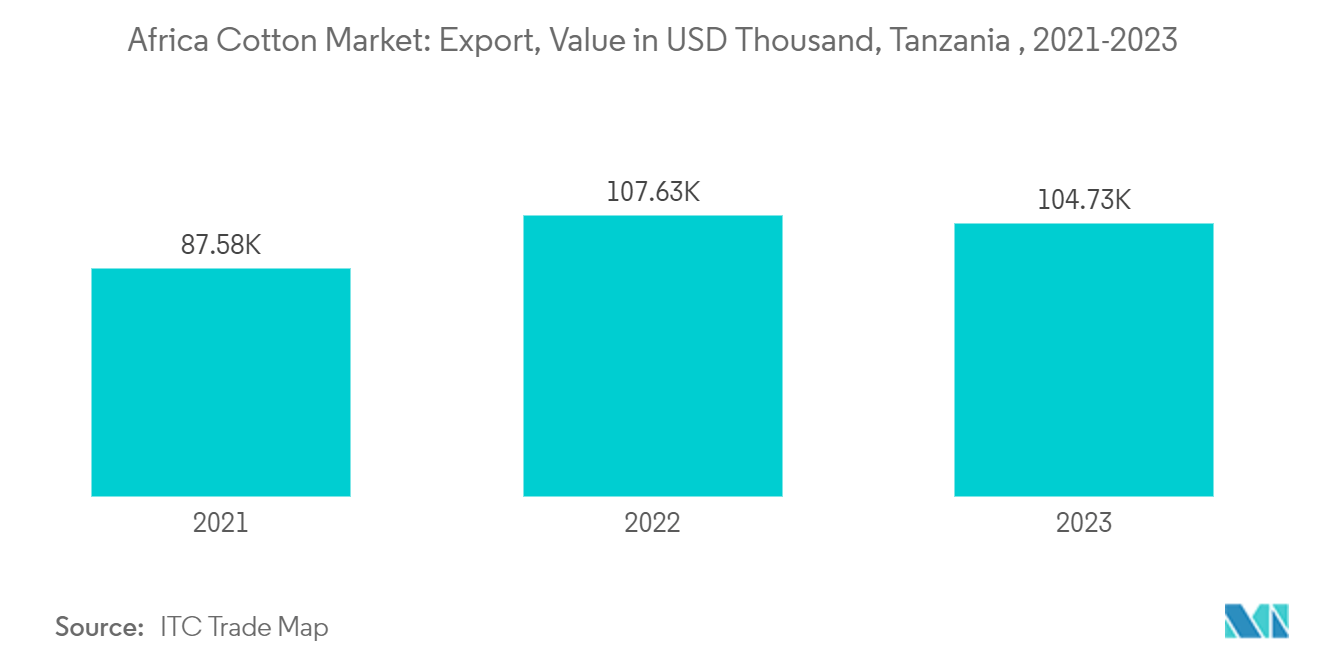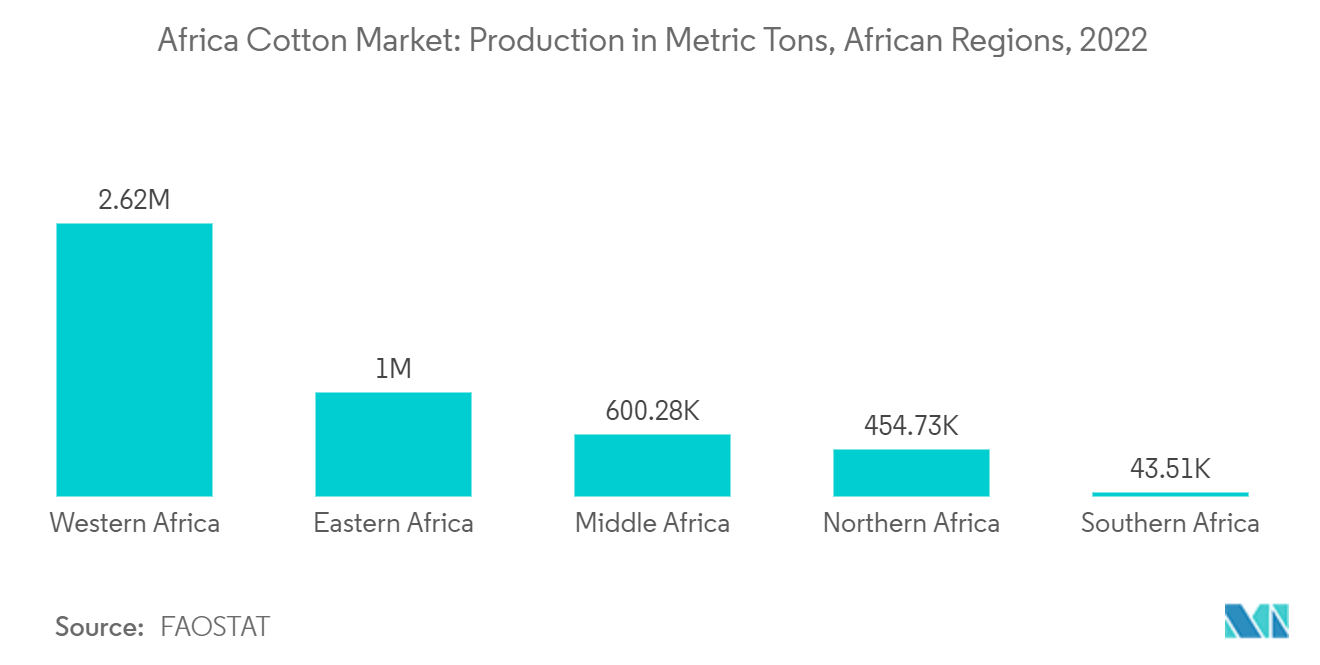Market Trends of Africa Cotton Industry
Increasing Demand for African Cotton in the Textile Industry
- Cotton is a vital raw material for the African textile industry and is used to make yarns and fabrics for clothing and other products. The textile industry's increasing utilization of natural fibers, such as cotton, is driving the export of cotton from African countries. For instance, the export of cotton yarn from Tanzania accounted for USD 87,575 thousand in 2021, which grew to USD 104,725 in 2023, as per the ITC trade map data. The bolstering exports of cotton yarn is supporting the market's growth.
- The Cotton Made in Africa (CmiA) program run by the Aid by Trade Foundation received official recognition by the German Green Button standard as a sustainable natural fiber,' and was confirmed as an accredited source of raw materials by Cradle to Cradle Certified. It is likely to further boost CmiA uptake volumes through demand from existing and new program partners and apparel brands and retailers. The program's success in increasing cotton usage in the textile industry is boosting the market's growth.
- Along with this, the revision of the agreements between Sub-Saharan Africa and the United States benefits the African cotton market. The African Growth and Opportunity Act (AGOA) focuses on growing commerce in Sub-Saharan Africa and includes 34 African countries, such as Namibia and Rwanda. This statute makes African products, including cotton, appealing and accessible by allowing them to be included in duty-free shops worldwide, thereby expanding the market for cotton. The program was eligible till 2024 but was recently extended till 2025. Thus, the growing potential of cotton in the textile industry is aided by supportive initiatives, growing exports, and trade agreements, which are further driving the market's growth.

Western Africa Dominates the Production in the Region
- Western Africa comprises twelve cotton-producing countries, namely, Benin, Burkina Faso, Cameroon, Central African Republic, Chad, Côte d'Ivoire, Ghana, Mali, Niger, Nigeria, Senegal, and Togo. The Foreign Agricultural Service of the USDA reported that of the twelve nations, Côte d'Ivoire and Burkina Faso are the largest producers, and production in these areas is expected to grow during the study period. Among those countries, Mali recorded its highest cotton production of more than 526,000 metric tons in 2022, as per FAOSTAT. The high production of these countries in the region supports the cotton market.
- Along with this, Western Africa accounts for more than three-fourths of Africa's cotton exports. This is due to the high consumption in South and Southeast Asia, which are the major importers of West African cotton. Additionally, all West African cotton is exported, as mills are relatively sparse within the region, signifying the pivotal role that foreign demand plays for West African producers. This robust growth supports the region's high production compared to other parts. The production of cotton in Western Africa, Middle Africa, Northern Africa, Southern Africa, and Eastern Africa is 2,617,129 metric tons, 600,275 metric tons, 454,731 metric tons, 43,513 metric tons, and 1,000,643 metric tons, respectively. Thus, Western African countries lead the production of cotton.
- Cotton production has a chemically intensive production system that harms human and environmental health. In Western Africa, initiatives are being taken to increase organic cotton production. In 2023, Better Cotton started a new program to expand cotton production in Côte d'Ivoire and support 200,000 domestic cotton farmers in the first five years. The new field-level program is expected to offer training and resources to farming communities across the country to help them produce sustainable cotton. This is anticipated to increase the demand for Western African cotton in the forecast period. Therefore, the high production in West African countries compared to others, followed by supportive initiatives, drives the production in the region during the forecast period.


